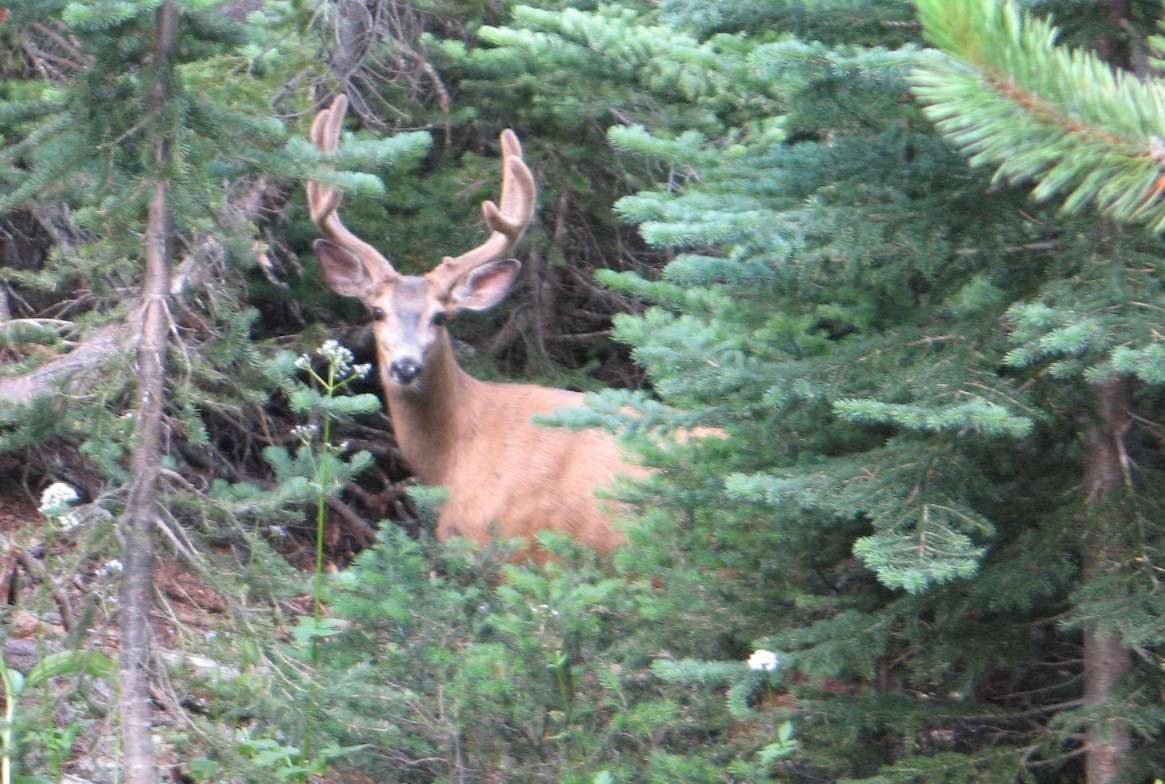Mule Deer
Specs:
- Mature 4 point bucks
- 4x4 bucks and larger
-
Mule Deer- Camp Based Hunt
These September mule deer alpine hunts are a rare and unique experience in North America. Ride through high alpine basins, glass for a mule deer bachelor group of bucks as they bed down at the tree-line. Rifle season opens September 1st.
- Season: Alpine: Sept 1-7, 10-16, 19-25, Sept 28-Oct 4
- Accommodation: Camp, Cabin
- Hunt Style: Horse or Foot
- Add-on Species: Grey wolf, Black bear, Coyote and Upland birds
Mule Deer - Lodge Based Rut Hunts
Drive along backcountry roads and hike timbered ridges during our Traditional Lodge-based Mule Deer Rut Hunts. As we travel through the mule deer’s wintering grounds, we scope out the big bucks running with does.
- Season: Rut: Nov 4-10, 14-20, 24-30; Traditional: Dec 4-10
- Accommodation: Hunting lodge
- Hunt Style: Vehicle, Foot
- Add-on Species: Grey Wolf, Black Bear, Coyote
5% of every hunt goes towards
conservation initiatives in the Chilcotin Ark

HUNT INQUIRY
Mule Deer Identification:
Mule deer can be differentiated from other deer due to their larger size. In winter, their pelage is grey, not brown with black colouring on their chest. A mule deer is particularly distinguishable by its large ears which can be 9” long when other deer measure just 7”. Mule deer have a white, black-tipped tail, surrounded by a white rump.
Mule Deer Biology:
A buck mule deer measures 70 inches average and with stomach can weigh between 180 and 400 lbs. This will vary depending on the climate and food availability. Doe mule deer average 57 inches and weigh between 120 and 160lbs.
Mule deer have similar antlers to those of black-tailed deer, but are generally larger and with more points at every age. This means that only when environmental conditions are bad will yearlings have spike antlers, they will usually have forks, sometimes even making three-point. In their second year, they will either have large forks or three points. Most mature mule deer bucks have five point antlers.
The greatest cause for death for mule deer is starvation during winter. Parasites and predation from cougars, wolves and coyotes are also major contributors. Although wolves and mule deer don't often live in the same areas, when they do, wolves are a dangerous predator. In our guide territory, they will chase mule deer onto frozen lakes where the wolves have the upper hand. Good predator management is how we can control for this. When mule deer live close to humans, domestic dogs become another serious predator, and being hit by vehicles on roads and railways is another serious cause of death.
Mule Deer Behaviour:
Mule deer mate from October to late November. In our guide territory, mid-to-late November is the prime time, varying by a week or two each year depending on weather. Bucks will mate with multiple does, sometimes staying with two or three at the same time, but usually spending a few days with one doe before continuing to find another. Does are pregnant for 30 weeks, giving birth to twins in June. Single births usually only occur when there is poor range condition. Mule deer are sexually mature by their second fall.
Diet and Seasonal Range:
Mule deer eat a variety of tree and plant species including aspen, willow, red osier dogwood, service berry, bitterbrush and juniper berry. Douglas fir is also eaten, but only when other food is scarce. Mule deer eat a wide range of herbaceous plants including blue grass, wheat grass and June grass. In our guide territory, snowbrush is another favoured plant.
Mule deer are well distributed across much of British Columbia. It is found in much of western North America, from the Yukon almost to the Mexican border. Some mule deer are migratory, moving hundreds of miles from a winter to a summer range, others remain in a similar location year-round, just moving from the alpine to the valleys to avoid the deep snow. In our guide territory, we have mule deer that migrate away for winter, but also mule deer that move down into the valleys for the rut hunts.
Mule Deer Management:
Logging road deactivation is essential for maintaining winter range and migration corridors for mule deer. At BCTMO Conservation Club, we work with local loggers to ensure that roads are deactivated after use in line with government regulations, and that the roads that are prioritized for deactivation are those that provide the greatest benefit to mule deer. Snowbrush propagation in mule deer winter range is also important to ensure suitable habitat as this plant was largely lost following a wildfire. Predator control of wolves, cougars and bears is essential to maintaining our healthy mule deer populations.
